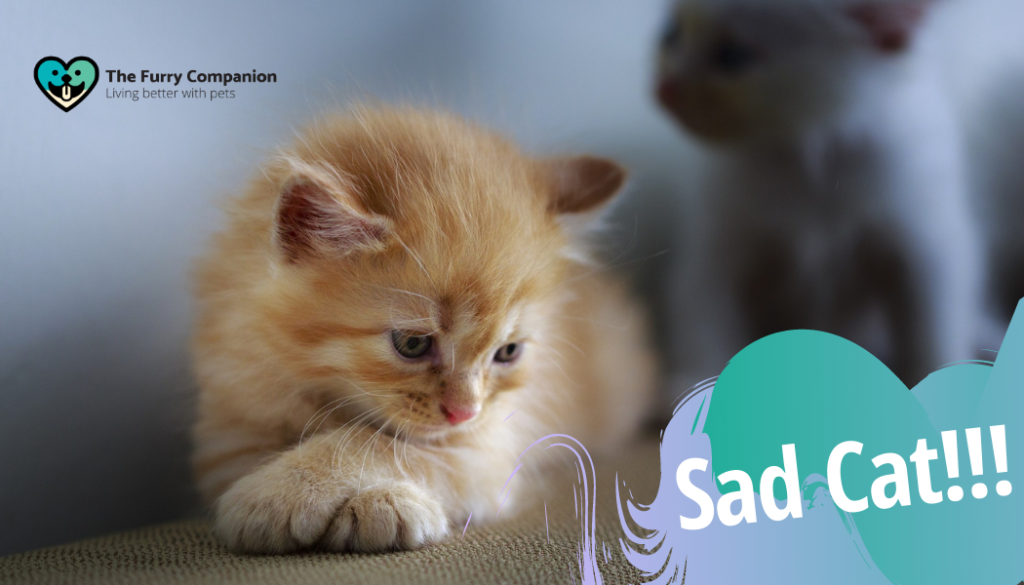
Admit it or not, cats have different personalities. Some might be sweet and outgoing, while others are impatient and isolated. However, if you observe that your typically hyper pet suddenly becomes a sad cat, it should concern you.
But how would you know whether your sad cat is going through something out of the ordinary? What do you need to do to address this? In this article, The Furry Companion will discuss the ins and outs of cat depression.
Table of Contents
What Are The Signs Of Cat Depression?

There are different signs of cat depression. You just have to pay attention to be able to distinguish whether they are undergoing this stage.
1. Vocal Clues
“Certainly cats can exhibit depressed behavior, but the general consensus is that they do not experience the same emotional changes associated with clinical depression in humans,” shares Jessica Vogelsang, DVM.
It’s not new for your cat to meow every once in a while. Cats tend to meow when they want to cuddle with you, or they’re just playful. However, a sad cat may purr less than usual, and it can be one of the simplest indications that your cat is starting to transition into the depression stage.
Meanwhile, if your cat still meows as often as before, notice the tone and pitch of their purrs instead. They might be producing low-pitched, unhappy, and mournful yowls. Once you observe these sad cat behaviors, it might indicate that there is something wrong. These reactions often happen when they’re trying to comfort themselves from the feeling of sadness.
2. Loss of Appetite
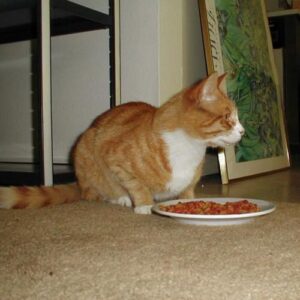
Cats are typically fond of eating. While some are inclined to eating large amounts, others tend to eat smaller portions yet multiple times a day. According to studies, this animal loves having a busy mouth.
At the same time, they’re also known to feel too excited about mealtimes. You’ll notice that they usually circle their owner’s legs while they are preparing the food. Cats tend even to feel more excited once they hear the pop of the food lid. It’s as if they haven’t eaten for centuries!
However, for a sad cat, mealtimes are entirely different. Since a sad cat loses its appetite, you will notice that your pet won’t be as enthusiastic as before, even if you place a plateful of the best cat food or fish in front of them.
At the same time, they’ll also most likely show disinterest in treats. Most domestic cats get used to treats, especially when the owners are training them. Just like dogs, this is something that pushes them to obey the commands of their humans. This motivation might not be effective with a sad cat, though. If you notice the shift in their attitude towards food and treats, there is likely something to be worried about. This scenario can be alarming since treats typically work.
3. Body Language

“When your feline friend resorts to the claws coming out and a quick swipe in frustration, you will know its mood is going down,” Wellness Natural Pet Food’s veterinarian, Dr. Danielle Bernal DVM, says. “It doesn’t mean your cat is innately cranky or chronically depressed, just that it’s having a tough moment. Handle them like you would a sad child.”
Aside from the cat’s vocalization cues, you’ll know that you’re housing a sad cat based on their body language. Their sadness may manifest in their eyes, fur, ears, or body positions. Examples of these are tail tucked, ears held backs, hairs standing on end, slouching position when sitting or lying down, and more.
They are most likely to show how their bodies are tired all the time. Yes, cats are popularly known for their unwavering dedication to sleeping. But outside these wee hours, they still enjoy occasional spurts of activity. When they are not sleeping, you will often see them playing, exploring, stretching, and playing outdoors.
However, you’ll notice that sad cats sleep more compared to their usual. It’s as if they don’t have the energy to do their regular routine. They tend to pour most of their time just sleeping and resting. Lastly, it’s just not all about their excessive sleep. Sad cats do also stray away from their favorite sleeping spot. As owners, you may easily notice this since cats typically have their go-to location for napping.
4. Personality Change
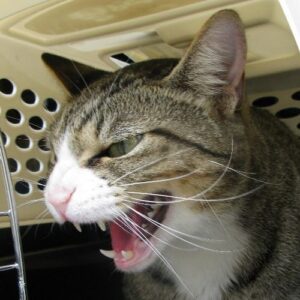
A sad cat does not only mean isolation. Some even develop a tendency to be more reactive and aggressive out of sadness or fearfulness. You might observe your cat be more reactive even towards the simple things. You may also notice that they may even get mad at things they enjoy doing or playing with before. This abnormal behavior may indicate that they’re feeling something out of the usual, which might translate to sadness and eventually depression.
Aside from getting mad, there is a possibility that they’ll lose their drive to do things on their own.
“A sad cat may lose interest in the activities that used to engage him, become reclusive, and hide. More quiet cats can become clingy or demanding and the fear of strangers that all cats seem to share can become heightened when a cat is sad,” Nelva J. Bryant, DVM, MPH, reveals.
5. Over or Under Grooming
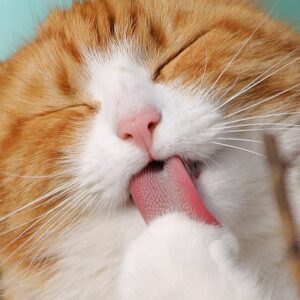
Just like a person, cats also undergo grooming habits changes when depressed. Some cats may stop grooming themselves altogether, which results in a messy booty, oily coat, knots in long hair, and the presence of dandruff. At the same time, cats who refuse to groom may end up with sticky or itchy skin.
On the other end of the spectrum, a sad cat may also over-groom. While cats must maintain hygiene, overgrooming can adversely affect their skin. Doing so may lead to irritating the skin that would leave wounds and bald patches.
6. Excessive Scratching
If your cat is undergoing depression, they may start scratching their body or things around them more often. They use this as a coping mechanism to cover up their sadness and stress. Aside from this, they also use this to mark their territory.
7. Changes in Bathroom Habits
Cats use the power of their scent to feel better. Suppose you have a well-trained cat who suddenly starts urinating in inappropriate places such as the couch, pillow, or under the table; your cat may be having problems. It is undoubtedly a red flag for your pet to soil outside the litter box after being trained to do it properly.
Cats do this intentionally to establish their territory. It gives them a sense of control of their surroundings. However, keep in mind that it should also be a for you if they
Common Reasons for Cat Depression
Before tailoring treatment for your sad cat to escape their depression state, you need to know where everything came from. You have to pinpoint the primary reason why your pet reached that level of sadness. Listed below are various possible causes of cat depression.
Human or Another Animal’s Death

It’s a common misconception that cats are insensitive and aloof. Cats are, in fact, social animals that quickly form bonds with the people and animals around them. Therefore, they also take a big hit whenever their companion dies. As humans, death can take a toll on the pets too. Cats may also feel sad and mourn when they lose someone close to them.
As an owner, do not force yourself on them at times like these. Yes, they would like the extra attention. But if it’s too much, there is a tendency for them to stray away from you more. The best way to go about this is to be still open to cuddles just if they go to you and ask for it.
The Arrival of a New Pet
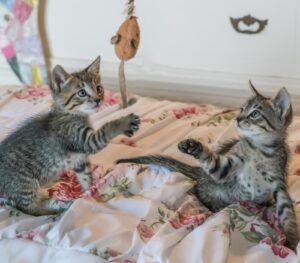
Believe it or not, cats are attention seekers. They want 100% attention and love from their owners and the people around them. Therefore, it’s not ideal for them to see a new pet in the household. Add to this burden is when you give more of your time to the newcomer.
To avoid this from happening, it is best to introduce them to the new situation gradually. Before getting a new pet:
- Expose them to other animals first.
- Teach them to interact with them to break the ice.
- Let them see that you may give your attention to these animals without having to break your bond with them.
Assurance and patience is something that they need at times like this.
Once they’re used to the companionship, that’s where you may come in with your new baby. Make sure that you introduce each other appropriately. This way, they’ll be aware of its presence. Then, play with them together as much as possible to avoid jealousy between these two. If you can, try to spend equal time with each pet. Don’t make them feel that you have your favorites.
Change in Food or Litter
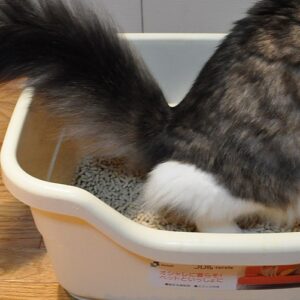
What most people don’t know is that cats are believers of habits. They have established their daily routine, and this is sacred to them. If you cause something that will deviate them from their routine, they won’t take it too lightly, and they’ll most likely become a sad cat. This also includes simple details such as changes in the brands and types of their litter and food. Gradual changes are recommended for your kitty time to adjust.
If you want to change their food brand, do this slowly, so they have time to adapt. You can mix the new food with the old food to help them get accustomed to it. Start by serving a full of the original ones and bits of the new brand. After a week, use ¼ of the latest and ¾ of the old, and increase the portion of the new brand week by week until you cover the whole ration.
Changing litter boxes is a bit trickier. One strategy that you can do is place the old one beside the new litter box, so they still feel comfortable with the situation. Make sure to keep it in your original location. Then, just like the food changes, do the litter box changes gradually as well. Move the new box to its new location bit by bit every day to give the cat ample time to get accustomed to the new spot slowly.
Human Family Disruption

Cats are also sensitive when it comes to negative family happenings in the house. They know when the siblings are fighting, if there are scars on a couple’s relationship, and more. Surprisingly, they also feel the burden when a family gets broken, mainly through a divorce. Aside from feeling the tension in the people’s emotions inside the house, it’s also difficult for them to adjust to an owner’s absence, which happens when couples decide to live apart.
Treatment for Cat Depression
There are various ways to address cat depression. Some might take a little bit of extra effort and time from you, but there are also simple steps that will help them alleviate their sadness. A sad cat is hard to treat, but it’s possible, especially if you put hard work into it.
Go to a Veterinarian
“Most major medical diseases cause some kind of discomfort,” says Dr. Rachel Barrack, DMV, of New York City’s Animal Acupuncture. “The cat could be in pain and it’s manifesting as signs of depression. Before you write off any symptoms as signs of cat depression, bring your pet to the vet immediately to rule out anything more serious.”
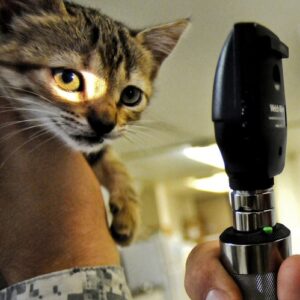
Some sad cats get their extreme emotions from severe medical conditions. This list includes diabetes, pancreatitis, and kidney failure, to name a few. Therefore, it is essential to bring them to a veterinary doctor and ask for their professional help. This way, they get to guide you on how to address these conditions through medication and rehabilitation.
If it’s beyond these diseases, a board-certified animal behaviorist can also help in terms of addressing your sad cat’s emotions. Their responsibility is to come up with various personalized behavior exercises. They’ll also support this with other treatments such as nutritional supplements, acupuncture, and homeopathic remedies.
Stimulate their Minds
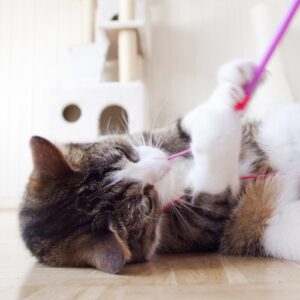
One way for sad cats not to dwell in isolation is by stimulating their minds. Try to keep them occupied to keep them from having bad moods. If you engage with mental stimulation, they’ll get to address their frustration and extreme emotions quickly. Try the following activities to keep your cat entertained.
1. Mimic Hunting Activity
Start this game by hiding their favorite treats around the room. To jumpstart, show them where the first one is located and praise them once they find and eat it. Then, come up with ways that will help find the other treats. Every time they encounter one, show affection, and praise them. This exercise will be good for their mental health, given that it mimics their natural hunting activity.
2. Play Date: Engaging them with other cats will help them overcome their sadness. Spend at least 5 to 10-minute dates with their colleagues per day to increase their social activity. Keep in mind that these playdates don’t have to be extravagant. You can ask your nearby friends who have cats to allow their pets to spend time together.
3. Cat Scratch Post: As mentioned above, scratching is a way for a sad cat to release their emotions. But of course, this behavior is not helpful for you, especially if you’re living in your own home. You don’t want your appliances to get those scratches. One way to avoid this is to provide a sturdy scratch post or wall near their bed.
4. High Perches: Cats love climbing and being on top of the world. Therefore, it’s an excellent exercise to build a lofty perch by the window. This way, they get to go up and down while watching the outside world.
Spend Time Together
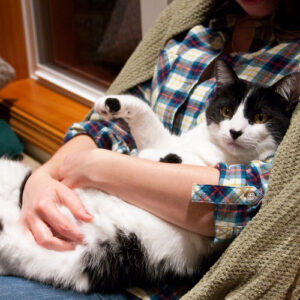
At times like this, your cat would like your full support. They don’t need a pack of people by their side. Instead, your sad cat will prefer to spend quality time with you so that they’ll easily overcome their depression.
Do this by giving a bit of your time every time you are in the same room. Cuddle with them and play with them so they’ll feel loved. While you’re working, you may even take some time to hold and sit with them to make them think that they can always count on you.
Assist in Grooming
Cats love to be well-taken off. One way to do this is to groom your sad cat by combing and brushing their fur. It increases their happiness and improves their state of well-being. At the same time, this is also an excellent opportunity to establish that owner-pet bond.
Ask The Vet Regarding Prescription Drugs
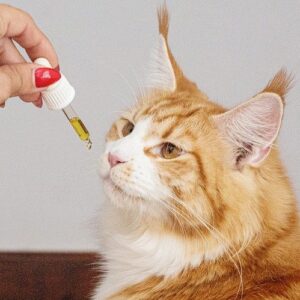
Humans are not the only ones who may use prescription drugs. If your sad cat is having difficulty eating or interacting, short term medication may be your answer. Some of the prescription drugs you may try are the following:
- Zylkene: This is a milk protein-derived food supplement that affects the different parts of the brain. What’s good about this medication is that it carries a natural anti-anxiety treatment that may help your sad cat overcome their emotions.
- Feliway: As mentioned above, the scent is a critical part of a sad cat’s treatment approach. Feliway has a relaxing effect since it serves as a synthetic cat pheromone, which provides a reassuring scent message.
Just a reminder: do not buy these prescription drugs on your own. Ensure that you seek your veterinarian’s advice so it won’t cause more harm to your pet.
Like any mental health treatment, addressing cat depression is not a one-size fit all approach. As the owner, you have to test these different strategies to know which one works for your sad cat. Your veterinary doctor’s role is also critical since they’ll be the ones who will know what’s best for an animal in a particular situation.
Identifying Separation-Related Problems In Cats
Worrying about your cat’s depressive behaviors is especially difficult when the signs are not frequently observable. A recent questionnaire aiming to assess the separation-related problems or SRPs in domestic cats may be the solution to your problem. Through the assessment of cat owners, they found categories of physiological signs displayed in the cat’s behavior.
Cats suffering from frequent SRPs may engage in at least one of these criteria: destructive behavior, having excessive vocalization, urination in inappropriate places, depression-apathy, aggressiveness, and agitation-anxiety. In lesser frequency, cats may defecate in inappropriate places.
Frequently Asked Questions
Can cats be sad?
Cats are just like humans, so they also get sad. Sadness is more straightforward to pinpoint in humans through verbal and non-verbal actions. But with cats, it is harder to determine whether they’re sad or not. Owners must look carefully and study their actions before concluding anything since animals do not have the means to confirm or deny the diagnosis.
What happens when a cat becomes sad?
A sad cat may exhibit various symptoms of depression, depending on their personality. Some of these changes include a change in behavior, appetite, and activity level. Others also show physical symptoms like lethargy and nausea.
How can you cheer up a sad cat?
You can do many things as an owner so that your sad cat may overcome its emotions. For one, make sure to give your attention to your kitty every day. Play with them even if they’re a bit distant initially. You may also support this cause by keeping their minds active through toys and other fur friends.
How do I tell my cat that I love him?
You can directly tell your cat that you love him. You can do this by gazing into his eyes and while saying it. Although cats don’t understand human words, he’ll know that you are serious and that you mean what you say. You may also groom him by brushing, rubbing, and petting them. They consider these as signs of affection.
Why does my cat’s meow sound sad?
A cat’s meow is a good indicator if they’re sad or happy. If you’ve heard the meow of your cat sound sad occasionally, then they’re just probably seeking your attention or asking for food. Sometimes, it might also mean that they’re housing an illness. However, if you’ve noticed that your sad cat’s meow is always sad, then it might be because of anxiety and depression.
Does my cat get sad when I leave?
Yes, your cat becomes sad when you leave. Domestic cats usually feel anxious and scared when they’re left all alone for a long time. Their attachment to their owners is too much of a burden to them in these scenarios. When they experience this separation anxiety, they’ll most likely bank on excessive vocalization such as moaning, crying, and meowing.
Do cats have the ability to laugh?
Cats cannot physically laugh. But, they have their ways to show them that they’re happy or if they’re enjoying something. The closest way to determine this is through their purr. This sound of joy serves as a good indicator, and people correlate this with laughter.
Should you let your cat sleep with you?
Sleeping beside each other is suitable for a sad cat. It brings them warmth and comfort, and your presence reduces the stress they feel. This scenario soothes them and eventually makes them sleep more quickly.
How can you tell if your cat is sad?
Do cats get depressed when alone?

